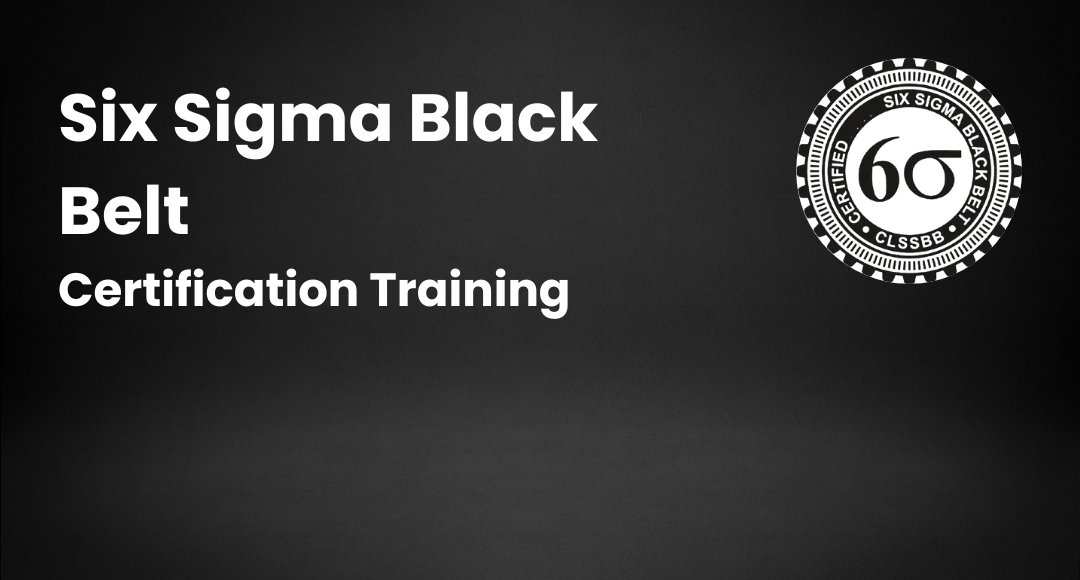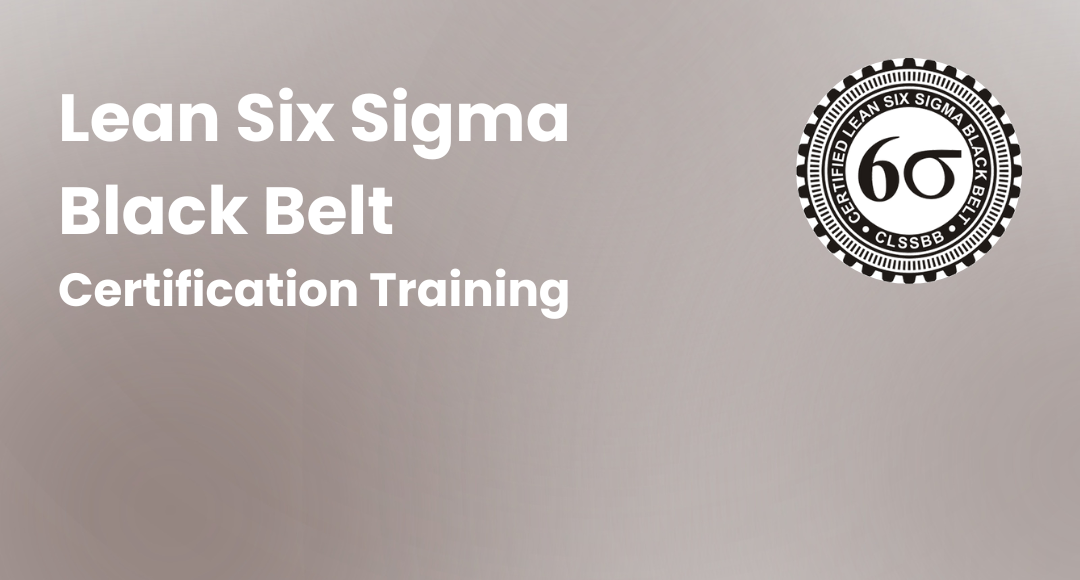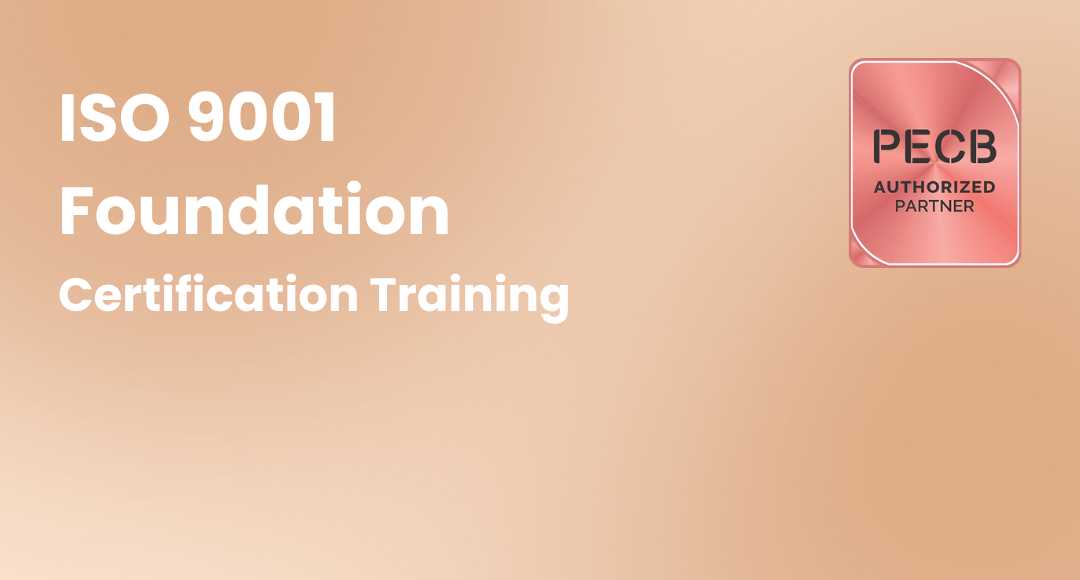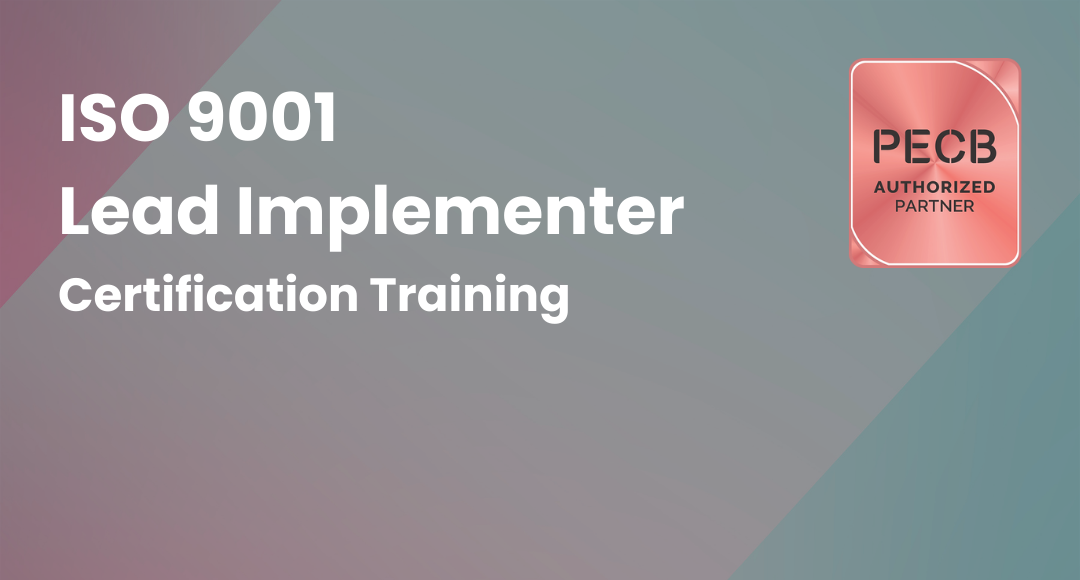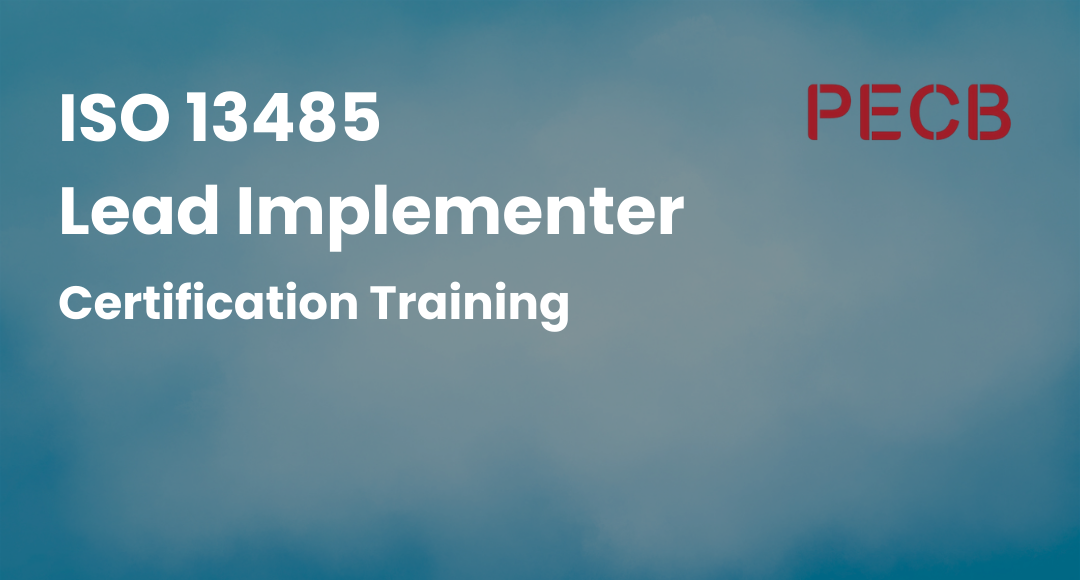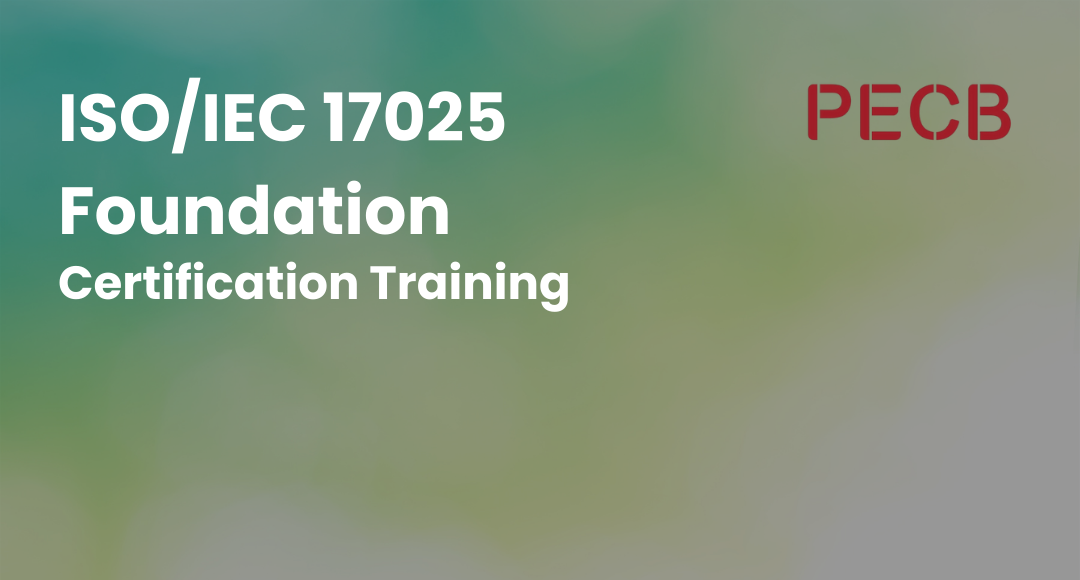Quality Assurance in Six Sigma Explained
-
 By Aradhya Kumar
By Aradhya Kumar - Published on Feb 6 2023

Table of Contents
- Guide to Quaality Assurance with Six Sigma
- How does the quality assurance process work?
- Why there is a need for quality assurance standards?
- Quality Assurance Planning
- Why the approach for quality assurance can bring great results?
- Enforcing QA reporting
- Organizations work on quality assurance
- Takeaway
Guide to Quaality Assurance with Six Sigma
The six-sigma concept came about to revolutionize the concept of providing the optimal level of quality throughout the process.
Every so often, quality would be restricted to a specific department, and quality testing and quality assurance would be one of the final take-ups on the finished product.
But as technology and customer-centric requirements had to be fulfilled, there was a need to overhaul the entire quality testing to quality assurance from a new set of principles. Six Sigma fit the bill and paved the way for every industry which was looking for that key to change and help transform their processes at par with global standards.
How does the quality assurance process work?
The Six Sigma methodology has reworked on so many levels of quality management, including quality assurance, to get rid of the defects that are discovered in the current processes.
There is a need to eliminate factors that hamper any sort of improvement in the quality assurance planning of the end product.
The concept emphasized on putting in place a mold for the processes so that there would be little or no variance throughout the processes.
Six Sigma not only helped large organizations but can be used for smaller firms to save on loss on capital and effectively manage time schedules.
The first quality assurance benefit from Six Sigma is the quality approach that no methodology has been able to replicate in terms of the results compared to what Six Sigma has been able to provide over the years.
Six sigma’s quality assurance methodology has set the benchmark for excellence by raising the standards in a way that can implement quality assurance management.
The quality assurance system works well in every sector that requires QA services,

The desired standards had to be met in order to achieve quality assurance goals, and there was a proper system in Six Sigma, which others lacked.
Six sigma methodology was introduced to bring in the sustainability of businesses in tough environments and be profitable too. Hence, this methodology works well with quality assurance services.
The six sigma green belt works on quality assurance. There is quality control testing right from the production and continues until delivering the final product to the customer.
The desired standards with consistent quality are what keeps the promise of excellence with industry approved testing techniques. It will definitely help the quality assurance officer to use up the methodology and improve product development.
Quality assurance was challenging before, but QA manager can now take it head-on with the responsibilities that include
- Throughout the software development cycle of assuring the quality of every product or service
- Whether high standards are maintained throughout the process
- Improve on the existing standards and get the six sigma green belt approach working into the process to offer quality assurance
- QA auditor has a keen eye on sales statistics and may relate to the quality assurance procedures of the product or service delivered
- The quality auditor required has to be conveyed to all the employees and make it a common goal to be followed
Quality control in the project management domain has undergone revolutionary changes, and you will find that quality assurance covers the entire project life cycle, unlike quality management, which just gets restricted to the product or service.
The role of the quality analyst or QA officer involves staying updated with the latest techniques and
- how the responsibility of quality assurance standards change and
- how higher parameters are set every time, to keep pace with it, and
- make sure that the product or service is never compromised at any stage of development.
Why there is a need for quality assurance standards?
The six sigma QA best practices work in tandem to identify and find ways to get rid of the defects that would have cropped up in the quality of the process that is being used during the project development.
The principles work on specified limits that will ensure that the target will help in zeroing down the defects. The smaller the upper limit, you will know the rejected parts easily.
The lower specification is bigger, so you can meet the entire quantity and not miss out on any product or process even if there are several of them.
The nominal part is the middle ground, which is to ask the customer, and the interaction will help to find out the problem and resolve it in a productive time frame.
Quality assurance is vital
The deliberate QA process in agile is aimed at,
- Be able to get data and statistics into the process
- Bring objectivity to identify errors or defects that impact the quality
- Making sure the process does fit into a variety of business goals
- Organizations and businesses can define objectives and understand and cater to the industry requirements
Knowing QA and QC
The quality assurance and quality control methodologies are based on five phases that refine the process of quality assurance and testing.
It reworks and improves the project development from every aspect to deliver the best to the customer who will be assured of the quality assurance in every project.
This is how the quality assurance cycle begins,
- You would start by defining the problem and the requirements that need to be met to fulfill the goals that are needed to satisfy the customer
- The ability to measure the performance helps to gather data and analyze to improve the defects and optimize the process better
- The quality assurance isn’t just to find the flaws or collect the data, but work on the data gathered and see the variations that might have occurred.
Identify the cause and build the strategy accordingly. It has to work around the fact the process is not affected in any way and functions smoothly as before.
- The need to work on solutions that the quality of the end result will be pristine and defects cease to come by
- The new processes have to be tracked and controlled—the need to maintain them so that it does not lapse back to defect making processes.
There is a need to be work done on internal quality assurance.
When designing the quality assurance and testing processes, you would have to look into the design aspect
- You would check on the goals that need to be achievable and thus build around the business strategy that will work effectively for a longer-term
- There is a need to work on critical to quality which has to meet the customer requirements will help define project goals better
- When delving into the project, you have to be ready with viable alternatives and multiple options during the life cycle of the project when presenting to the customer
- Getting a prototype ready will help identify what needs to be improved on the defects it has, giving a clear idea for making the changes before moving on to the detailed version of the project
- How the project will progress has to be decided well in advance with the clients and customers.
The approval should be both internal and external to get a go ahead with the project.
When you look at the criteria for QA engineering and design, they have similarities in the approach, though utilized in different cases.
The methodology is often used for the product and processes that are previously there but don’t cater or meet the customer’s needs as per the performance or quality assurance standards.
When such products and processes fall short, you would have to go back to the drawing board and make use of the design stage methodology, which will be apt enough to optimize and get the desired results.
Quality Assurance Planning
If you ever want to apply the six-sigma methodology and quality assurance concepts to the project, there have to be some criteria that would help and be enabled to fit into the strategies.
There also need to be types of quality assurance that need to be employed for it to work out as per the six sigma methodology processes.
here’s how to use quality assurance methods effectively,
- There has to be an idea on the inputs as well as the outputs for the project and processes that require them to get the laboratory quality assurance.
- There cannot a predetermined solution for a project and this mentality will hamper the project right from the initial stage
- The operators who will be the actual carrying out the project and they will find it difficult with too many variations in the operation and trying to keep it simple for them to flow easily would be a great idea going forward
- The person enforcing the variations has to have definite knowledge about them so that they are carried out successfully, and any defects can be eliminated, and the process can be controlled
When studies were made to know how six sigma solutions for quality assurance can be so different for other QA and testing, which looked into finding the defect, rectifying it and going back to the process, but Six Sigma delved into what caused into the defect and made sure that such defects didn’t occur in the future.
The need to see what is the root cause and make sure that the processes don’t get hampered with the delay in rectifying the defect each time resulting in slow cycle time.
The six Sigma has worked out on it as shown below,
Quality management can be set up in an organization as per the six sigma implementation methodology
- The higher-level management has to be ready to implement the change necessary for quality assurance and develop the vision that will help accommodate the six sigma methodology adequately.
They need to encourage innovative ideas for quality assurance and provide for the resources so that they can be worked on.
- In the six sigma principles, you will need people who act like champions on executing the vision and be mentoring the black belts to carry out the processes necessary for quality assurance effectively
- The master black belts would be nurturing the black belts or the green belts along with the champions so that there is consistency in the six-sigma strategy that is worked on and also in attaining quality assurance.
- The black belts can help execute the specific tasks under the guidance of master black belts
- The green belts get a perfect opportunity to learn the six-sigma methodology for quality management and quality assurance, along with doing their respective tasks as well.
The other belts such as the white, yellow, and orange, would have some idea about the six-sigma methodology and quality assurance, but they aren’t totally involved in the project, till they are completing in sync with the six sigma workings.
Large and small organizations are looking into candidates who have six sigma certifications and knowledge in quality assurance because these candidates can now make processes efficient.
Especially when handling big and complex projects, having knowledge of six sigma methodology and quality assurance makes it a whole lot easier to meet global standards and get optimal customer satisfaction.
The six sigma certification programs provide the candidate enrolling for training the necessary proficiency in the six sigma methodology.
This ensures quality assurance that is unbeatable at every level of the process and the end result will have no or minimal defects.
The variations in the project are simple yet will help the process to optimally utilize the resources and avoid increasing the time scales which have to be maintained as per the schedule when the project was first decided.
Why the approach for quality assurance can bring great results?
Several six sigma accreditation centers provide apt training and certification for the methodology training they impart. Six Sigma has a data-driven approach that can take the project to a different level altogether.
The six sigma deployment will check the down to the smallest level of variation in quality and its applicability to the final cost of the project, with these metrics you will be able to handle the quality of the product efficiently and be able to predict process performance.
When you improve on the inefficient processes, you can then build on a significant advantage to be able to deliver high levels of quality and dramatically bring the costs down with zero defects in the process and definitely in the product as well.
The interconnected phases used in the six sigma methodology will
Define → measure → analyze → improve → control
It will help in the on-time delivery process that gets hampered when trying to repair and correct the defects and reinstate the process again in the usual ways of quality management in software engineering.
When you try to define the processes, you will be able to map the details in which direction they have to flow and get the right results.
The client's expectations can be clearly captured if you follow this pattern, and boundaries set will help the when to begin and end the processes.
The metrics are used to analyze the process and are collected from various systems.
When you have the data in your hand, you can then focus on quality assurance, on making the process performance better and work on the key issues.
The metrics have another benefit as well. You will be able to quantify the improvements and increase quality assurance. If the use of the five-phase methodology still doesn’t rectify the defects or the processes that cause the quality change, you would have to go the five-phase design methodology, which can help you make the necessary improvements.
Enforcing QA reporting
There has to be a data collection plan in place for the order, which has to be done right to the delivery stage of the project so that the entire strategy can be processed efficiently.
You can get the systems and audits right with the help of process metrics for the same. You will have to identify the gaps bridge them with the help of the metrics available, and fulfill the goals for the project.
The quality assurance officer can work on the root cause analysis and look into the corrective actions that have to be undertaken with the help of the technology.
The methodology will assist you in finding the minutest detail in the variations that play in the quality of the processes. Look for those opportunities that you can utilize to improve on the project and get the processes working in that direction.
When you are working on the improvement plan, you will have to develop and work on the implementation plan first to make the changes possible and get them to be seen for real in the process line.
The need to document the improvements and the modifications that are applied to the processes as well as the structures which include the
- Staffing
- Training
- Incentives
The following is the crucial part of the process if the changes don’t get implemented and continued till the end of the project lifecycle, it would then be of no use to get the change done in the first place.
Hence it is the need and the role of the quality assurance officer to see that the changes are carried as per the schedule and as the changes have been made without any of the steps to be dropped or overlooked on.
If any of the steps get out neglected, you will never get the quality that you are seeking for and end up with what you begin with. Therefore the plan or the principle of carrying of the change must fall on the quality assurance officer.
You will have to track and be able to monitor the necessary effectiveness and get the real-time performance to give better inputs for data and later analyze those conclusions to improve on the processes.
Six Sigma works on the practicality of employing the changes that the methodology will bring to the entire process.
Sigma processes will allow you to make a rating of the manufacturing process and look into the defect-free production.
The costs too can be reduced, and by making the desired changes that cater to the customer needs, you can get the defects reducing drastically.
The define phase is delved into depth in the six-sigma methodology with the team leader working on the designing targets and understanding the needs of the clients. So, the main objective was to
- Minimize costs
- Increase client satisfaction
- Utilize eco-friendly measures
The measure phase of the six-sigma methodology worked on the collection of data and finding the causes that brought on the problems and addressed them in a manner that can improve on inefficiency.
The analyzing phase helps to pinpoint wherein the change has to be brought in and get the system to make those changes that benefit the organization and satisfy the customer as well.
There is a need to start rolling out the reformed process with the necessary variation that is required to make it efficient.
During the iteration of the processes that are involved, you may find the tendencies of some of the processes that may change the quality of the process, which you can rectify with little variation.
Now that you have the help of the data collected and a strategy employed, it can help solve the quality issue by enabling the reject parts to lessen.
Organizations work on quality assurance
The improvement in the processes will definitely work in the direction of saving time, costs. If there is a possibility of utilizing eco-friendly processes, it will make quality assurance as efficient as possible.
These processes have to be worked on, and each of them has to look into minutely looking to check if they can be improved upon as newer technologies as methodologies to ascertain whether processes are relevant and can help sustain a better balance of the quality and output have to be a weight upon with metric assisting us with all the data collection that is done to make sure that each of the processes works towards giving the desired output in the end.
Establishing control on the processes that you have sought variation plays a major role of the quality assurance officer to look into that the control is maintained they do not revert back to the old processes, as it happens very easily, to curb this, there has to be regular monitoring and the report has to be documented at every change that occurs so that it can help keep a note of what can imbalance the process hence the impact can be evaluated for the end result as well.
The situation can be handled in checking in with the processes and ensuring that each time you find the defects or the rejects, you will understand that one or several processes have not been able to do justice. You will have to bear the impact of quality loss that you get to see.
The quality assurance comes from what the six Sigma focuses on total quality assurance and quality control.
There is work that starts from every person in the company understanding the goal see that the processes that are utilized are process-centered.
There may be a difference in the approach when you look into the traditional quality assurance engineering wherein focus is improving the process. But the six Sigma may want to improve the process to get rid of the defects, but it will ensure the variations isn’ t too drastic and make the operators hard to cope with the change and further make mistakes and delay the process invariably.
Six Sigma works on the quality by rigorous training and testing, checking into the several levels it offers
- Six Sigma Yellow Belt
- Six Sigma Green Belt
- Six Sigma Black Belt
- Six Sigma Master Black belt
The six-sigma quality assurance makes sure that the improvements made will make the processes more efficient enough for future projects as well.
Six Sigma is a methodology that has been well thought out and can work in various circumstances as well as bring in what other quality management principles lacked and could not deliver in the past.
The switch has made a greater impact on the standards delivered, and it has kind of become a global standard to implement six Sigma into company processes to have uniformity.
It was initially made to cut costs and elevate profits, but now six Sigma is a norm every organization follows to get the quality assurance that is required of every process that the organization handles.
The quality assurance program may be defined, but the control has to be taken into consideration by looking at the data collected and analyzing where the errors would have cropped up and found ways to correct them.
All the while six Sigma has its focus on the customer satisfaction factor as well, changing the process so that costs are cut down aren’ t the sole motto of the methodology, but throughout the project, the processes have to be worked on and not only on the end result defect that can jeopardize the entire project.
The rectification at that point would raise costs and waste time and labor to redo the entire thing.
To know the extent of the problem in the processes is through data collection and analyses that enable us to pinpoint what was necessitating the quality downfall.
You will have to improve and control the processes that are beneficial and the ones that need improvement and suggest variation that isn’t far from the original to give scope to the operators to resume the process without much help and continue to the tasks as per project schedule.
You can now acquire Online QA training by taking up various levels of Six Sigma Certifications,
These six sigma training programs are offered by Sprintzeal, an ATO (Accredited Training Organization) of IASSC. IASSC is the governing body for all six sigma certifications.
Takeaway
Controlling the variables is hard with barriers and evolving technologies and elevated expectations from the customer. All this puts the organizations or businesses to utilize methodologies such as six Sigma to work out solutions that can satisfy all, conditions, and bring out the best as well as increase sales and revenue.
To know about six sigma certifications and to find the six-sigma course that fits your career goals, chat with our course expert
Subscribe to our Newsletters
Popular Programs
Trending Posts
Six Sigma Certifications - Reasons Why you Should Get Them
Last updated on Aug 18 2022
Total Quality Management - A Complete Guide for Beginners
Last updated on Nov 6 2023
What are Quality Standards? | A Guide to ISO Standards
Last updated on Jun 4 2024
Six Sigma Black Belt Certification – Value and Career Benefits in 2024
Last updated on Jul 27 2023
How to Effectively Implement a Robust Quality Management System?
Last updated on Aug 26 2024
Best Six Sigma Books in 2024
Last updated on Apr 26 2023
Categories
- Other 66
- Agile Management 58
- Cloud Computing 51
- Project Management 170
- Big Data 58
- Business Management 82
- Digital Marketing 73
- IT Service Management 29
- Programming Language 50
- AI and Machine Learning 68
- IT Security 110
- Quality Management 77
- IT Hardware and Networking 25
- Microsoft Program 4
- Workplace Skill Building 12
- Risk Management 9
- Information Security 8
- Leadership and Management 7
- Corporate Training and Development 1
Trending Now
Top Career benefits of Lean Six Sigma Green Belt
ArticleLean methodology, Six Sigma methodology and Lean Six Sigma Explained
ArticleSix Sigma Black Belt Certification – Value and Career Benefits in 2024
ArticlePareto Chart in Six Sigma - Explained
ArticleSix Sigma Certification Guide - A Professional's Guide
ArticleQuality Control Explained – Six Sigma
ArticleQuality Assurance vs Quality Control
ArticleTotal Quality Management - A Complete Guide for Beginners
ArticleSix Sigma Certification – Everything you Need to Know About Getting Certified
ArticleLean Six Sigma on Resume for Rewarding Career Benefits
ArticleSix Sigma Yellow Belt Certification - Six Sigma for Beginners
ArticleQuality Management Interview Questions 2024
ArticleQuality Manager Interview Questions and Answers for 2025
ebookService Delivery Manager Interview Questions and Answers (With Examples)
ArticleSix Sigma Interview Questions and Answers 2024
ArticleA Supply Chain Management Guide to Mastering Logistics End to End
ArticleSenior Quality Manager Interview Questions and Answers 2024
ArticleTop Quality Analyst Interview Questions and Answers 2025
ArticleFinancial Analyst Interview Questions and Answers 2024
ArticleRisk Manager Interview Questions and Answers 2024
ArticleCompliance Manager Interview Questions and Answers 2025
ArticleOperation Manager Interview Questions and Answers
ArticleHow to Become a Quality Manager - Career, Job Scope and Certifications
ArticleHow to become a Quality Analyst
ArticleSix Sigma Certifications - Reasons Why you Should Get Them
ArticleTop Qualities of a Good Manager and a Leader
ArticleLearn about Statistical Process Control (SPC) and its top applications
ArticleCost of Poor Quality - A Detailed Guide
ArticleImplementing 5S Methodology for Better Work Efficiency
ArticleWhat Is Lean Management?
ArticleBest Six Sigma Books in 2024
ArticleLeadership vs Management - The Ultimate Guide
ArticleQuality Assurance Plan - Six Steps To Quality Assurance Plan
ArticleOperational Planning Creation, Key Elements and its Benefits
ArticleA Complete Guide to Product Life Cycle Stages 2025
ArticleSix Sigma tools for DMAIC Phases
ArticleWhat Is Lean Manufacturing?- An Overview
ArticleThe Lean Continuous Improvement Model: A Comprehensive Guide
ArticleDMAIC vs. DMADV: Key Differences and Choosing the Right Six Sigma Methodology
ArticleA Deep Dive into the Power of Lean Continuous Improvement Process
ArticleIntroduction to Lean Manufacturing- Definitions, Framework, and More
ArticleLean Continuous Improvement Methods for Business Excellence
ArticleUnderstanding the Key Principles of Lean Manufacturing
ArticleSecret to Unlock Organizational Excellence: Stages of Continuous Improvement
ArticleLean Continuous Improvement: A Detailed Guide to Mastering Organizational Quality
ArticleLean Waste Management: The Ultimate Guide 2026
ArticleA Deep Dive into Lean Continuous Improvement Tools
Article8 Wastes of Lean - Strategies for Identification and Elimination
Article5 Lean Continuous Improvement Principles to Supercharge Your Operations
ArticleThe Ultimate Guide to Lean Manufacturing
ArticleUnderstanding Lean Manufacturing's Pros and Cons
ArticleLean Waste Reduction Strategies: Boost Efficiency and Cut Costs
ArticleTop 10 Lean Manufacturing Tools for Optimal Productivity
ArticleBeyond the Basics: Benefits of Lean Continuous Improvement
ArticleWhat are Quality Standards? | A Guide to ISO Standards
Article7 Important Types of Quality Management System
ArticleISO 9001 Standard: Benefits and Certification
ArticleA Comprehensive Guide to Quality Management Systems
ArticleBenefits of QMS Certification for Your Business
ArticleStep-by-Step Implementation Guide to ISO 9001
ArticleThe Ultimate Guide to ISO 9001: Boosting Quality and Certification Success
ArticleEssential Components of a Quality Management System
ArticleQuality Management System – QSM Approaches and Methodologies
ArticleHow to Effectively Implement a Robust Quality Management System?
ArticleExplaining QMS Documentation Structure: Benefits and Best Practices
ArticleWho Needs ISO 9001 Certification and Why?
ArticleKey Elements of ISO 9001:2015 Quality Management System
ArticleOvercoming Common Challenges in ISO 9001 Certification: Tips and Best Practices
ArticleBest Quality Management Tools
ArticleTotal Quality Management (TQM) vs. Six Sigma
ArticleQuality Manager Salary: What Freshers & Experts Earn in 2025
ArticleCertified Scrum Product Owner: Job Roles And Responsibilities
ArticleTips for Continuous Integration Testing: Streamlining QA
Article10 Quality Management Strategies Adopted by Top Managers
ArticleDMAIC for Warehouse Safety: From Hazards to Control
ArticleLive Data, Faster Fixes: How Smart Monitoring Is Rewriting Quality Control
Article

